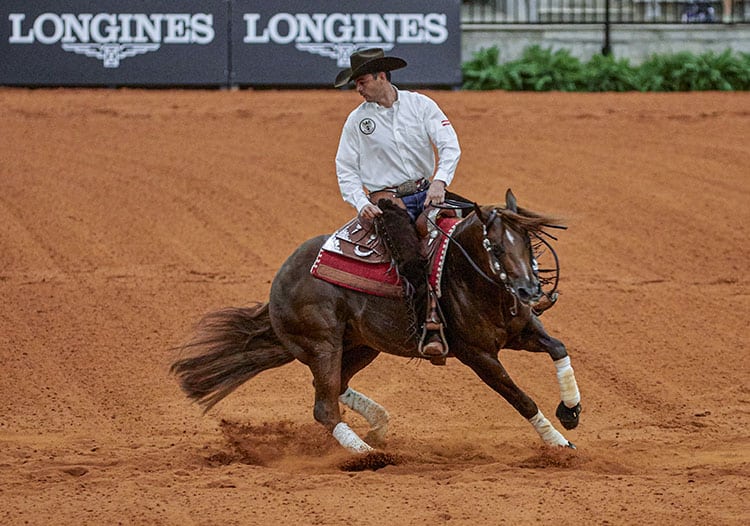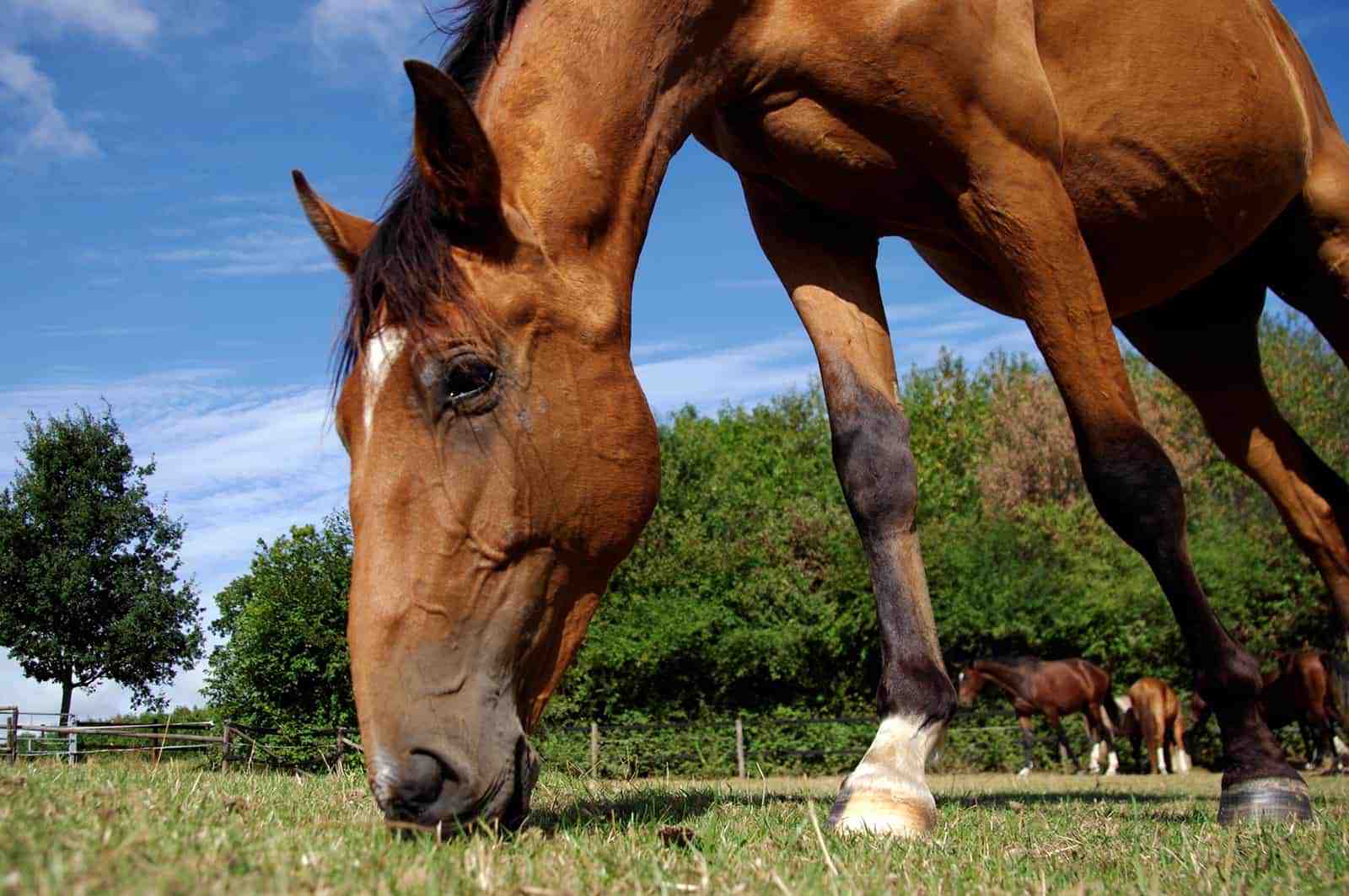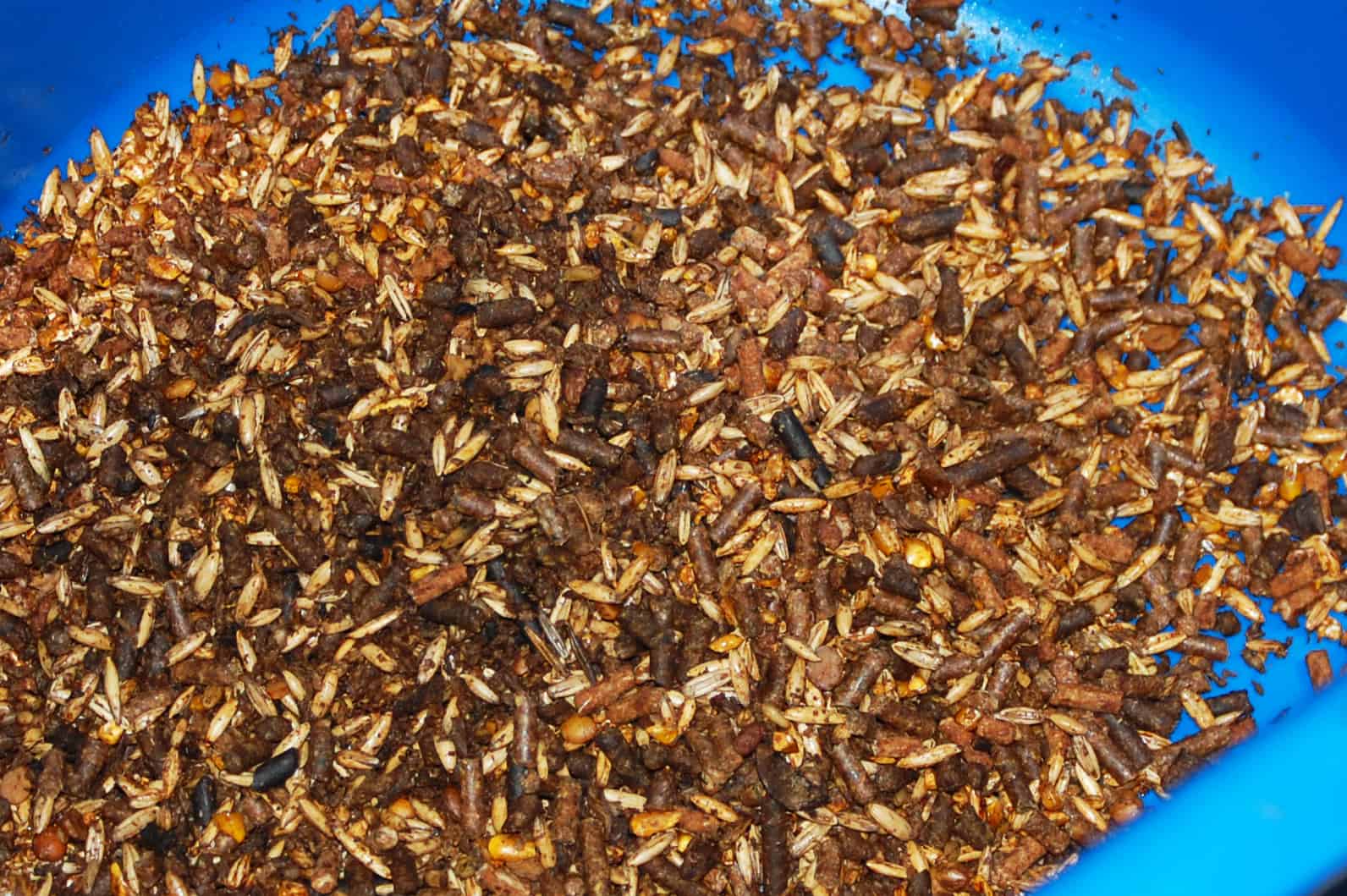Feeding Horses for Performance

Guidelines for fueling the equine athlete
What does it take to win with your horse? A reputable coach, world-class training facilities, and high-tech equipment will all give you an advantage, no doubt. But for your horse to feel and perform at his best, you’ll need to start at a more fundamental level and consider what kind of fuel you’re pumping into him.
Equine athletes have nutritional needs specific to their discipline, workload, and lifestyle; for optimal performance, you must address them.
“Fundamentally, the difference between the diet of an equine athlete and that of a horse at maintenance lies in the amount of energy, the quality of protein, and the balance of electrolytes required,” says Lynn Taylor, PhD, professor of equine science at Centenary University, in Hackettstown, New Jersey, and owner of a private equine nutrition consulting business.
According to the National Research Council’s (NRC) 2007 Nutrient Requirements of Horses, the energy, protein, vitamin, and mineral requirements of horses in heavy work can climb to one-and-a-half to two times their maintenance needs.
“Ultimately, the goal of performance horse nutrition is to replenish glycogen (the storage form of glucose, important for energy) levels and to prevent fatigue,” says Sarah Upton, PhD, equine nutrition researcher and senior lecturer of equine science at Nottingham Trent University, in England.
Let’s take a closer look at the subtleties of performance horse diets.
Energy’s Origin
Horses have different means of obtaining the energy they need to excel athletically. “The metabolic pathway used for generating energy varies with exercise intensity and duration, and not all feed calories are created equal,” says Taylor.
Essentially, horses derive the bulk of the energy they need for work from glucose (mostly found in carbohydrates) and amino acids, the building blocks of protein.

Once digested, the body can turn both glucose and amino acids into adenosine triphosphate (ATP) to be used for energy.
This process of turning food into fuel happens in one of two ways: The first is through aerobic metabolism, a process that uses oxygen to break down carbohydrates, fats, and protein into glucose. The second type is anaerobic metabolism, which produces energy using glucose in the absence of oxygen, a comparatively faster process than aerobic metabolism that grants immediate power. The catch? The energy produced is short-lived and doesn’t sustain the horse as long as that produced by aerobic metabolism. Plus, the anaerobic metabolism cycle produces lactic acid, which can accumulate in the muscles, causing fatigue and soreness.
To put these in context, consider two different types of performance horse. Endurance horses rely almost exclusively on aerobic energy synthesis to steadily cruise 50 miles or more, whereas racing Quarter Horses count on anaerobic metabolism to dash the short quarter of a mile between starting gate and finish line. Horses participating in other disciplines use both aerobic and anaerobic metabolism in different proportions, depending on the intensity and duration of their work.

Forage as the Foundation
Horses have evolved over the past 55 million years as herbivores, so forage is the foundation of their diet. They extract energy from forage by fermenting in their hindguts the structural carbohydrates that make up this fibrous feed. Forage is also essential to keeping a horse’s digestive tract healthy, as a high-fiber diet (1.5-2% of the horse’s body weight daily) helps prevent colic (abdominal pain) and gastric ulcers. Ulcers are a pain in the gut for any horse, but especially for athletes, as researchers (Nieto et al., 2009) have shown them to have a negative impact on oxygen consumption, which we know is essential for athletic ability.
Taylor believes owners can pay more attention to providing the best quality forage possible to horses in heavy work. Better quality translates to greater energy extraction, and not all hays are created equal. Plant species matter, with grass hays such as orchardgrass and timothy generally providing fewer nutrients.
Legume hays, on the other hand, are rich in energy and protein; that’s why tossing a few flakes of alfalfa into your athlete’s stall every day can be a smart addition.
Forage also includes fresh grass. Taylor says eating fiber straight from the source remains the best way to not only cash in on calories but also supply horses valuable fresh air, water, and sunshine.
“Pasture grazing allows movement and provides health benefits such as gastrointestinal motility, musculoskeletal strength, and mental stimulation,” she says.

Concentrates: Fuel for Performance
Historical texts suggest that humans were feeding horses concentrates as far back as the fourth century, when Greek philosopher Xenophon added grain to his war horses’ diets to make them run faster for longer—and it worked. While today’s sport horses no longer need to charge into battle, they still need energy beyond what forage can provide.
“It is often not possible to meet some athletic horses’ calorie demands by feeding only forage,’’ says Taylor. In this scenario she recommends incorporating grains slightly higher in fiber, such as oats, which are easily digestible and contribute to both energy production and digestive health.
Concentrates (cereal grains—oats, corn, barley, etc.—and commercially mixed feeds) are integral to the sport horse’s diet, so it’s important to understand the role they play. They provide a compact source of energy, intake of which dictates energy available for performance. In other words, you get out what you put in. “Energy” is not a nutrient in itself but a measure of a feed’s potential to chemically convert into substances that can fuel the body’s physiological processes. Again, the three main nutrients that can be used for digestible energy are carbohydrates, fat, and protein. Let’s take a closer look at each.
Carbohydrates
Starch and sugar are the two most common nonstructural carbohydrates (NSCs) fed to adult horses. They make up the bulk of corn, oats, barley, and other cereal grains. Once the body absorbs carbohydrate-derived glucose into the bloodstream, it can use it to either create ATP and consume it as energy immediately or store it intramuscularly as glycogen. When the horse needs that stored energy later, his body turns it back into glucose, a process known as glycogenolysis. Starch and sugar are great energy sources, and it can be tempting to offer them liberally to our equine athletes. However, we must feed NSCs in moderation. While most horses can handle them well (Pagan/KER, 2011), if they consume too much starch or sugar at a time, a complex physiological process that results in hindgut acidosis can cause one of two potentially career- and life-ending conditions: colic and laminitis (a debilitating hoof condition). Additionally, the “sugar rush” associated with glucose intake causes a spike in the hormone insulin, which, if repeated over time can cause metabolic disorders.
Fat
Good news: Fat can’t cause colic or laminitis. Fat is a rather safe and effective way to provide energy to horses in heavy work. It is extremely calorie-dense, containing 2.25 times more energy-per-weight than carbohydrates. Fat molecules are converted into fatty acids that the horse’s body can use as energy or store in adipose (fat) tissue. Upton encourages horse owners to embrace this valuable nutrient, because fat-based feeds make horses less “hot” and excitable than starch- or sugar-based feeds do. On a practical level, fat is also cost-effective to feed: Vegetable oil, rice bran, soy hulls, linseed/flaxseed oil, and sunflower seeds are all affordable sources. Horses can digest up to 20% fat in their total diet, but be sure to add it progressively because too much can decrease palatability and might result in loose or oily stool.
Finally, when supplementing a horse’s diet with fat, Upton recommends increasing vitamin E intake, as well. “When fats are broken down, they oxidize,” she explains. “Oxidation leads to the production and release of free radicals, which can cause cell damage. Vitamin E prevents this from occurring by protecting the cells from oxidative stress.”
Bottom line: Fat is an excellent energy source for hard-working horses; just take a few precautions when using it.
Protein
Joe Pagan, PhD, published a study in 2012 showing that mature working horses need relatively little protein. A traditional performance diet of hay and grain typically supplies the required amount, especially if alfalfa is part of the package. As mentioned, protein is made up of amino acids, and their quality matters. Those known as essential amino acids are particularly important. A few considerations to keep in mind with protein: Any excess is excreted via the urine as ammonia, a highly irritating gas to respiratory tracts and hooves. A high-protein diet also increases water requirements, which can be particularly problematic for athletes that travel and exercise frequently, putting them at risk of getting dehydrated. Finally, protein breakdown produces internal body heat, adding insult to injury when exercising and competing in hot and humid conditions.
Ration Balancers for Easy Keepers
Not all performance horses and ponies need the extra calories concentrates provide—some work hard and still get fat “on air.” These easy keepers can maintain adequate body condition and energy levels on forage alone. However, energy isn’t the only ingredient that helps a hard-working horse thrive, and hay alone does not provide all the necessary nutrients required for healthy bodily function. The solution? Ration balancers. These low-calorie pelleted feeds provide a concentrated source of nutrients, including often-overlooked vitamins and minerals. They’re convenient to feed and ensure all dietary needs are met without adding unnecessary calories.
A Note About Supplements
More than half of American horse owners feed at least one oral supplement to their horse, according to market studies, and hundreds are available. Manufacturers claim these products solve all sorts of problems but, before potentially tipping the balance of your horse’s ration with a supplement, Upton and Taylor recommend consulting an equine nutritionist for advice. Many manufacturers claim their products have performance-enhancing effects, but few have produced supporting scientific evidence, and some products even contain substances prohibited in racing and sport horse disciplines.
Nutritional supplements are designed to compensate for nutrient deficiencies in the diet. But how do you know what, if anything, is missing? Add the nutritional content of the forage portion (that includes estimating what the horse gets from pasture) to that of the concentrate portion of your horse’s diet, and compare the total numbers with what the NRC recommends as his nutrient needs. You must have your hay tested, while nutrient information is readily available on the labels of commercial feeds. When feeding performance horses, you might need to supplement with electrolytes at times. While good-quality hay and a salt block provide plenty in most cases, horses exercising in extremely hot and humid conditions can lose enough electrolytes through sweat that they need potassium and sodium chloride supplementation.
Final Words of Advice
In managing your performance horse’s diet, Upton and Taylor emphasize the importance of monitoring signs of progress. Your best resources are your vet and nutritionist, and either can show you how to estimate your horse’s weight and body condition score. Log these values monthly to evaluate changes over time. And when designing your athlete’s ration, consider how to effectively and safely give him the energy he needs to perform at his best.

Written by:
Lucile Vigouroux
Related Articles
Stay on top of the most recent Horse Health news with



















